
Yakushima on 35mm Film
Tomasz Wagner documents his trip to Yakushima using the Contax G2 — Shiratani Unsuikyo, Yakusugi Land, Mount Kuromi-dake, Seibu Rindoh
Yakushima: a mountainous island of challenging multi-day hikes, carpeted forests, and roadside wildlife.
Our travels around Japan began in earnest on the island of Yakushima 屋久島 located south of Kyushu in the East China Sea. We opted for an unconventional and inexpensive way of traveling to the island from the city of Kagoshima: via the overnight Hibiscus freight ferry that would have us sleeping in shared sleeping berths with minimal amenities. It suited us just fine.
Day One in Yakushima: Shiratani Unsuikyo Ravine and Taiko Iwa
We arrived to glorious sunshine and while waiting for our rental car to arrive, we watched the transport workers load the Hibiscus with local sweet potato and Ponkan oranges. Efficient and precise movements of the workers’ forklifts made short work of the colourful shipping containers lining the perimeter of Miyanoura Port; it may have been the whirlwind journey from Tokyo-Haneda to Yakushima (via Nagoya—Okayama—Kagoshima) within the last 36 hours working its confused magic on our brains, but it was all a bit mesmerizing. And then as the Hibiscus departed from the port, we saw the very same workers standing in a line, waving excitedly, wasting no energy in wishing safe travels to their departing colleagues. This left an impression on us, the kind that teases out a smile and delights in having witnessed such simple humanity.
The drive to Shiratani Unsuikyo Ravine 白谷雲水峡 was incredible, offering unmatched views of the island and its incredibly lush landscape carpeted with a plethora of greens. I could also make out azalea and pieris shrubs amongst the spruce and yakusugi 屋久杉, Cryptomeria native to Yakushima that are more than 1000 years old. Once we reached the forest itself we were met by gnarled tree roots, moss-covered stones, branches that hung like vines, and green pools of water; it’s no wonder artists like Hayao Miyazaki have been inspired by this area of Yakushima, commonly known as the Princess Mononoke Forest (or Mononoke Hime no Mori もののけ姫の森). The forest was alive in a way we hadn’t experienced elsewhere in all of our travels and it truly felt as if spirits could emerge from within the tree trunks and massive stones (that, or we had watched a few too many Miyazaki films prior to our trip). Beyond this area, the hike became deceptively challenging: thick cedar roots and human-made wooden steps made up a good amount of the terrain. We, as well as the handful of other hikers in this area were not deterred, however; the risk of falling on your face just as you greet someone with a gentle konnichi wa こんにちは is really just all part of the adventure. From here we trekked for several hours towards the viewpoint at Taiko Iwa 太鼓岩, ate onigiri (our power food throughout Japan) and rested our legs — before making the trip back down.
Day Two in Yakushima: Hirauchi Kaichu Onsen, Yakusugi Land, and Mount Kuromi-dake
We woke up by the sea — at the Hirauchi Kaichu Onsen 平内海中温泉. Tomasz went in for an early morning dip, but by the time I had shaken off my drowsy rental car sleep, a fisherman had himself perched on one of the large rocks a couple meters away. I didn’t much fancy the idea of heading into the alternating cold and hot sea water under these circumstances (while completely naked of course), so I simply waded in and sat a while, relishing my “first” onsen experience.
After driving through Anbo 安房 for some provisions (i.e. more onigiri and packed lunches), we made our way towards the Yodogawa 淀川 trail head to start what would end up being a ten hours round trip climb to Mount Kuromi-dake 黒味岳. We had read that the journey to the trail head itself would be a bit treacherous given the narrow road and single lane sections, but by this time we were adjusted to our right-hand-drive and left-side-of-the-road situation—plus, there was ample mirror action and very few vehicles around.
We were pleased today’s hike was quite different, in scenery and in terrain, than the previous one. The pale cedar trees of Yakusugi Land 屋久杉ランド were absolutely stunning. Gnarled cedar roots found us in this area of Yakushima as well, but what may have been most difficult about this particular hike were the rounded wooden steps and rotting wood bridges that stayed with us for the first two to three hours. We stepped into stands of yakusugi, crossed Hana-no-ego 花之江河 highland marsh, and scaled mountainsides. In fact, as we neared Mount Kuromi-dake it was necessary to use a series of ropes to walk up several exposed rock faces. The tattered black ropes made things feel even more adventurous and by now our legs were really feeling the burn. But what awaited us at the summit made it all well worth it: a panoramic view with Mount Miyanoura-dake 宮之浦岳 and other surrounding peaks, and clouds that rolled in and away, making the entire scene the stuff of art, paintings, films, dreams.
Day Three in Yakushima: Seibu Rindoh Forest Path and Leaving
There is but one main road on the perimeter of the island and in five hours you will have driven the entire way around. One of the most interesting sections of our leisurely drive is known as the Seibu Rindoh Forest Path 西部林道, a 26.5km stretch of road through the Kirishima-Yaku National Park 霧島屋久国立公園. As we approached the area, we found several macaques sitting on the pavement and moments later a scientist emerged from the forest, notebook in hand. We stopped a while. As we continued on, we found more macaques hanging out by the road and in the trees looking as if they were thoughtfully noting down the movements of the wild deer who were a little more leery about us and the metal creature we were riding with. Without that metal creature, however, we wouldn’t have seen nearly as many quiet tea plantations or school yards, or stumbled upon an abandoned mining site, or took in as much stunning coastline. You won’t often hear me praise the virtues of a car, but I had a special affinity for this one especially as it had been our bed and shelter for the far too few days we explored Yakushima.
We left a part of our hearts there and we would do the same throughout the rest of our travels in Japan.
CAMERAS & LENSES
Contax G2, 21mm F2.8, 45mm F2, 90mm F2.8
35MM FILM
Kodak Portra 160
FILM SCANNING & DEVELOPMENT
Pakon F135 Self-Scan & ABC Photo


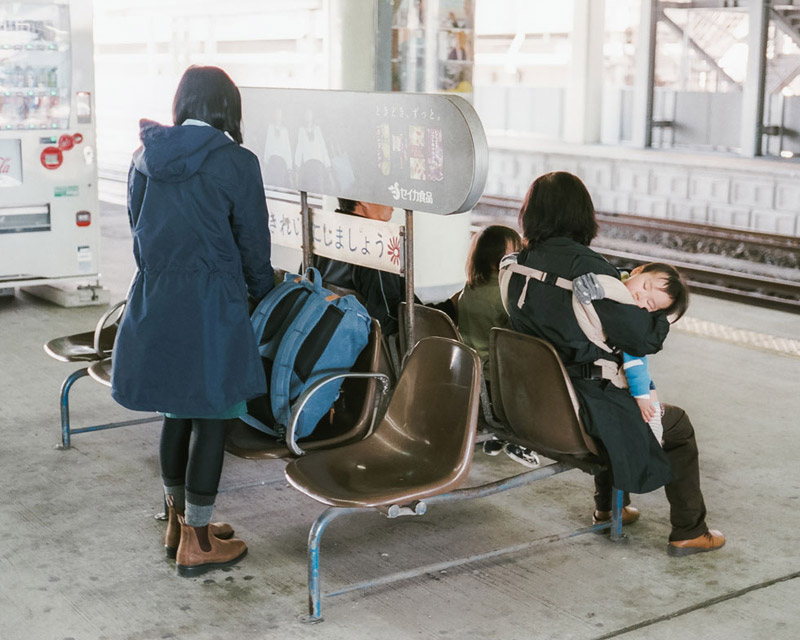

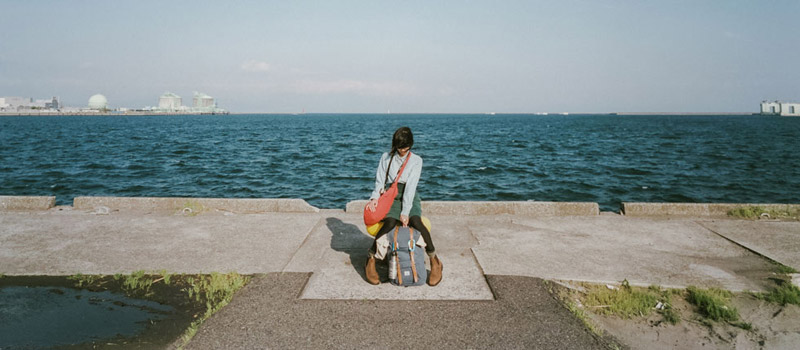








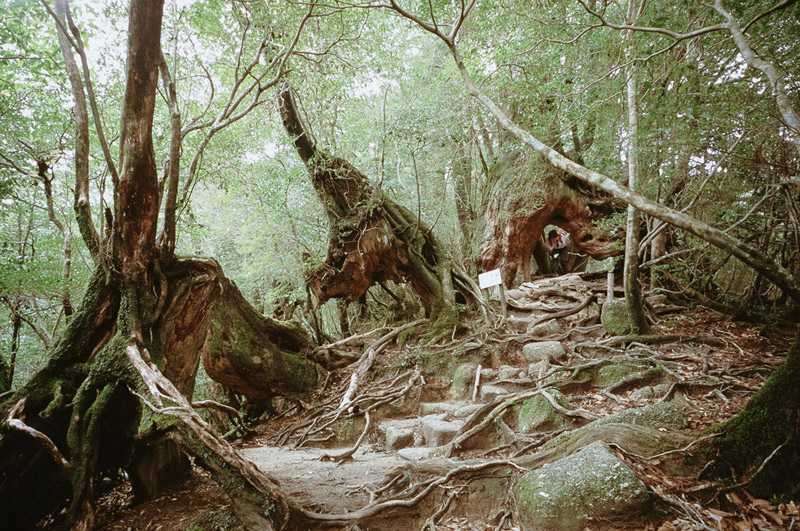






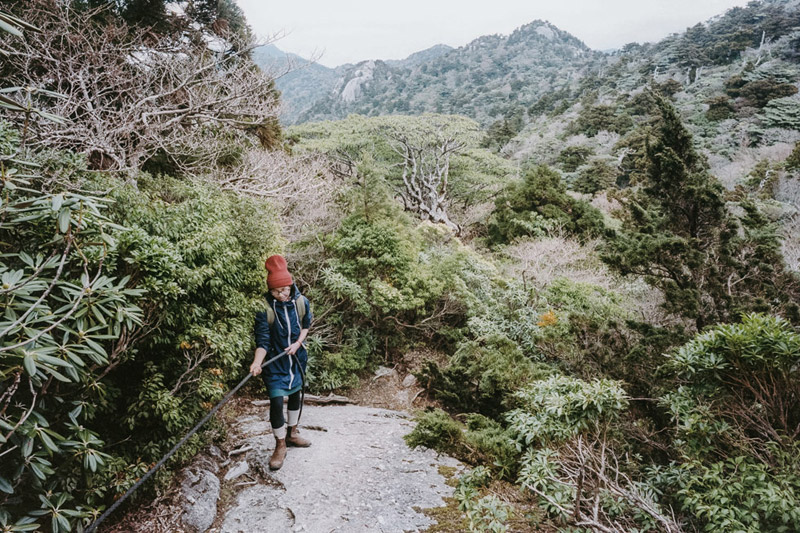











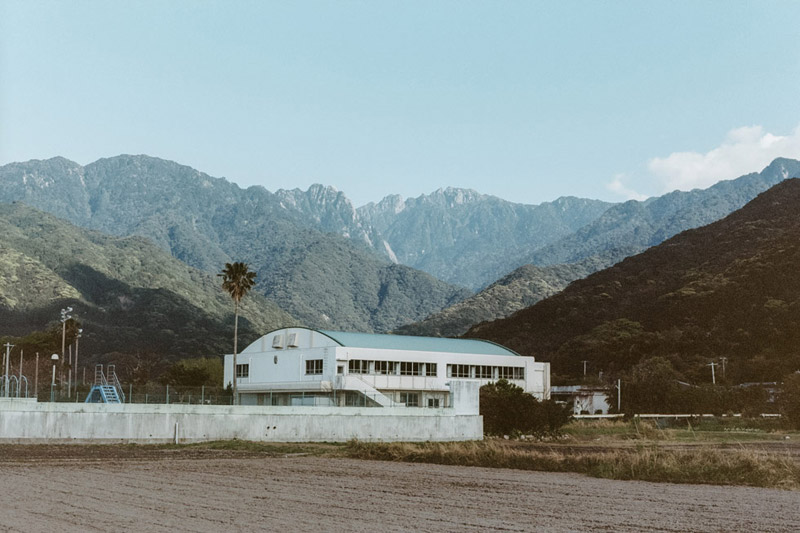





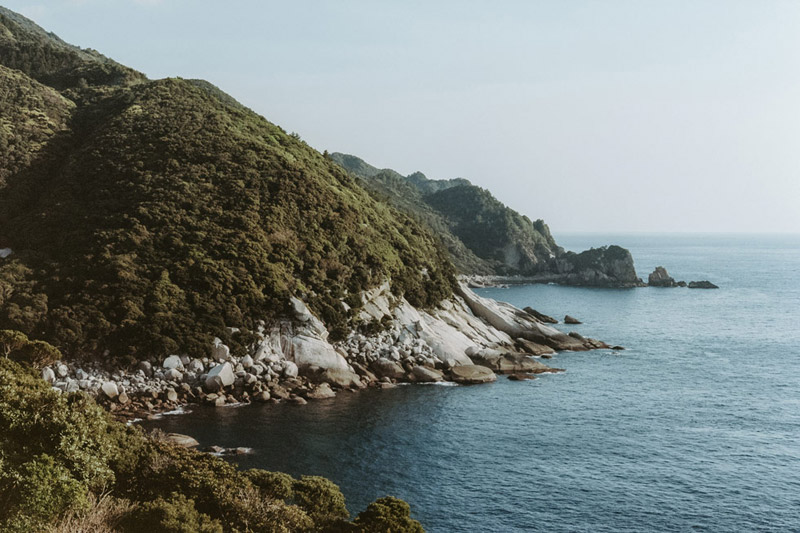







@ 2026 Tomasz Wagner Photo & Films, est. 2010
Tomasz Wagner is a wedding photographer
based on the West Coast, documenting celebrations worldwide